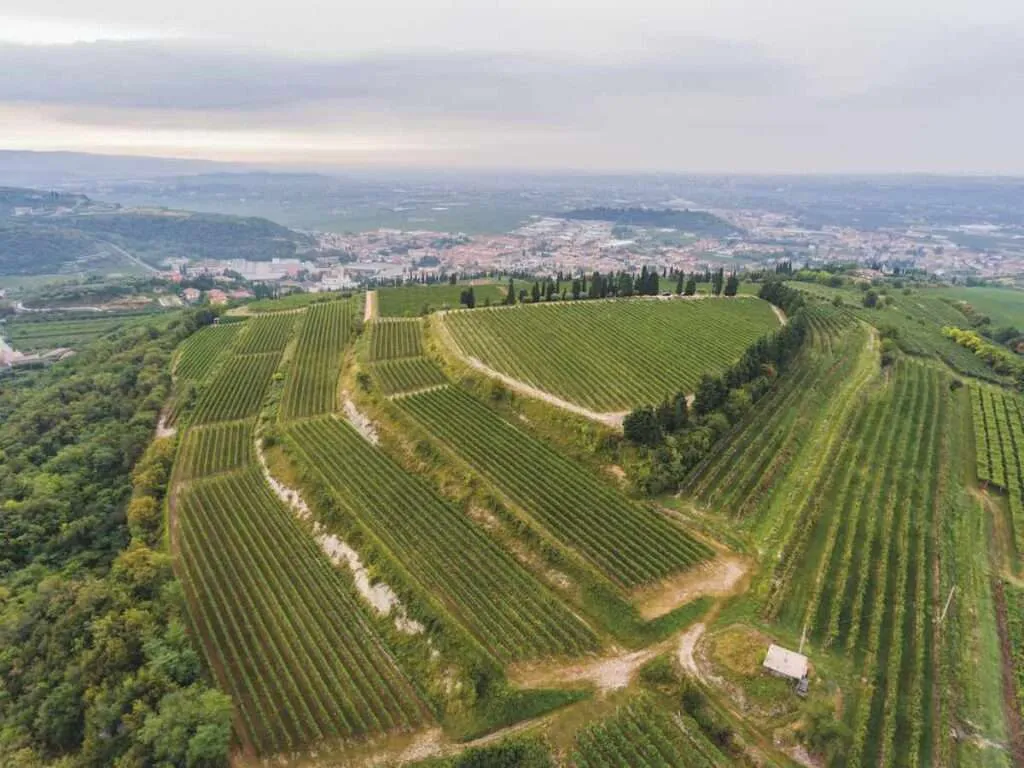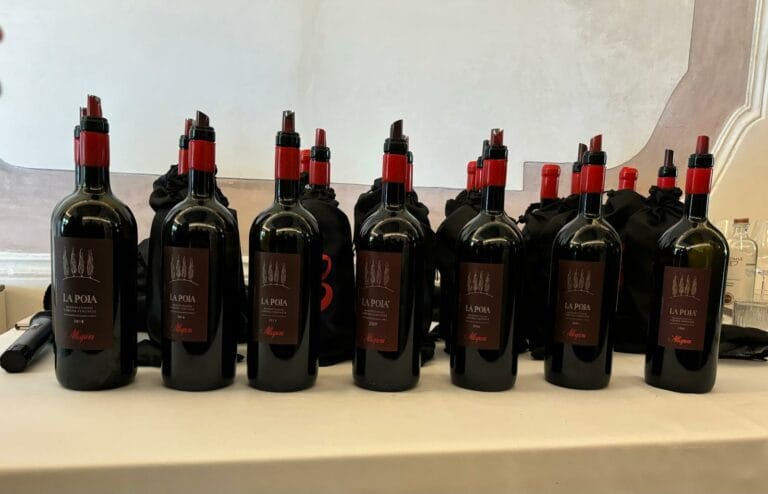
La Poja Blind taste: 1997-2018
The Allegrini’s “La Poja,” 100% Corvina grape, is comparable to a focal point in a painting.
A very specific point in the image that is of particular interest and dominates the rest. A point that all wines should have. It’s about their characteristics, without worrying too much about what’s missing or what’s too much. The message is what counts. And it’s important.
The focal point of this wine can be found by looking at a map of Valpolicella, in Veneto. On the hill of La Grola, in the town of Sant’Ambrogio di Valpolicella, there’s a vineyard planted in 1979, which today has the same effect as the mention of Cézanne: not only was he a forerunner of Cubism, but he also brought structure to life. The photograph of a landscape or a face becomes solid and lasting. And isn’t it the same with wine? To capture the perfect moment on the stage of a grape, to tell its story at the height of its potential, to accompany it on a journey that inevitably experiences moments of light and shadow, of market fluctuations, and moments of closure and openness to the outside world.
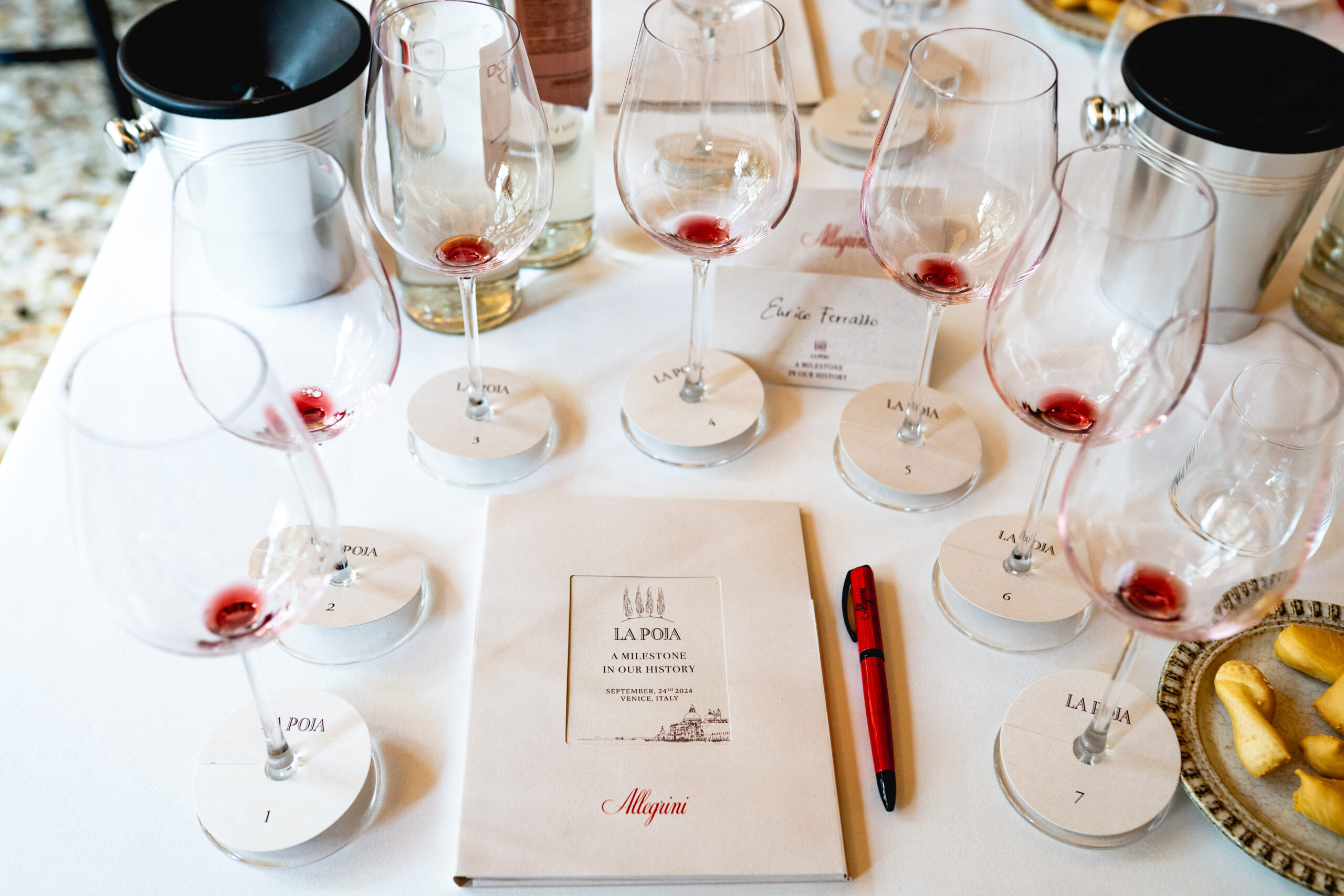
Once in the glass, this is the strength of great wines, capable of revealing themselves over time. Some technical notes: the La Poja vineyard, at 380 metres above sea level, is planted with 4,240 vines per hectare – compared to the average of 1,600-2,000 in the late seventies – using double Guyot (instead of pergola) to achieve more colour and concentration. Only Corvina from the “Graspo rosso” clone, no Rondinella, Molinara or Vespolina – typical of Amarone production. Today it is a heritage of great value, born from the intuition of Giovanni Allegrini, who, with his deep knowledge of the land, understood the unique conditions of the hill. Due to to its south-eastern exposure, La Poja is protected to the north by Monte Pastello and to the west by Monte Baldo, with the cooling influence of the Adige valley and a slight continental influence from Lake Garda. Then there’s the calcareous soil on the surface.White streaks in the soil create geometries that give a sense of the grandeur of the vineyard.They represent order.Sugar concentration is almost always present, as is phenolic ripeness. Allegrini doesn’t need the appassimento process.In the glass, it is a full-bodied red, rich in aromas, completely dry, with a much lower alcohol content than Amarone.
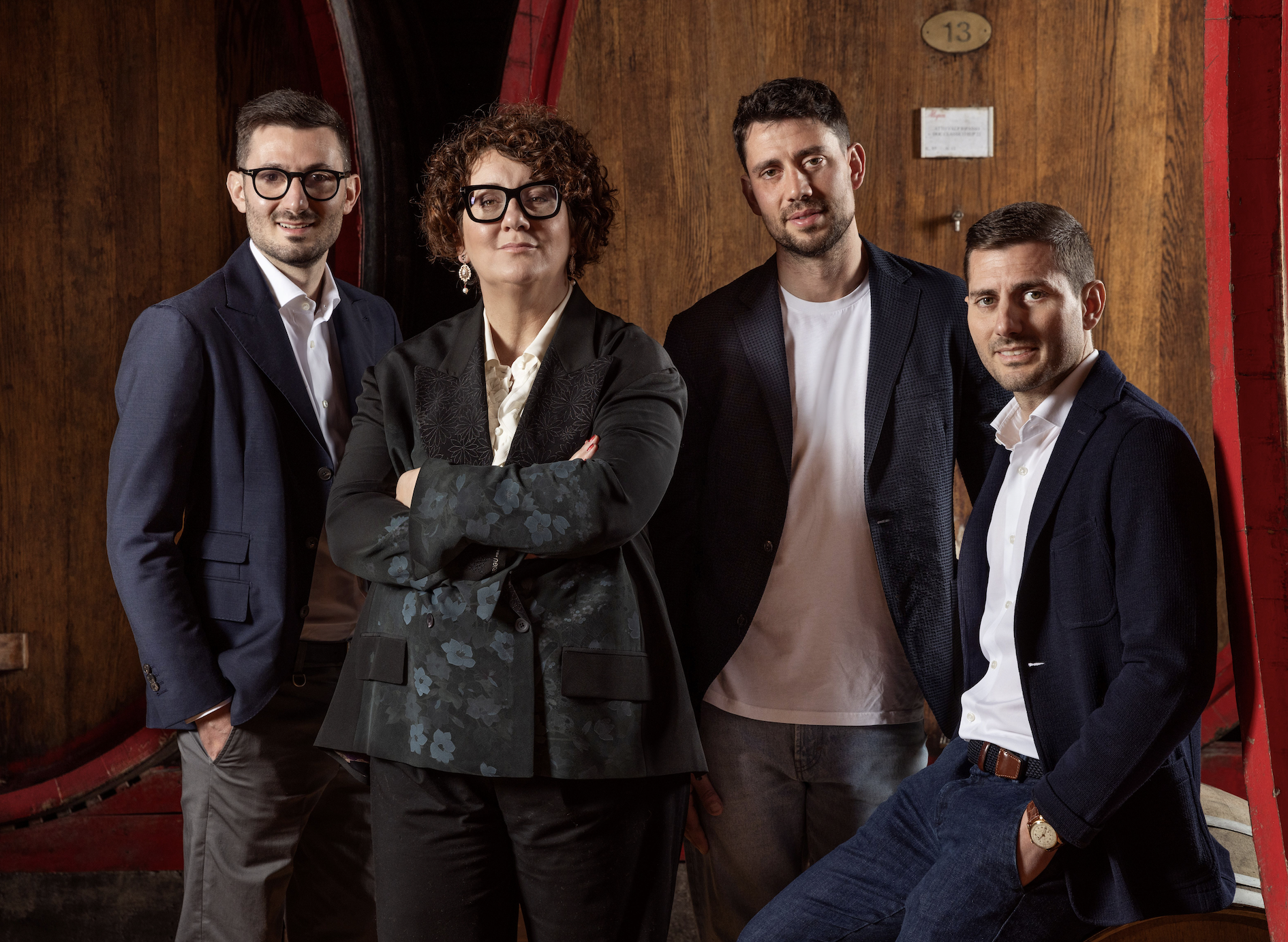
It has spicy nuances and toasty tones. Don’t be deceived by its seemingly quieter expression in the early years of the wine, because with bottle ageing its complexity develops into a body that feels like velour, with aromas of sweet fruits that become more autumnal and ironic with age. We understood this through a journey that Allegrini took us on, spanning a vertical tasting from 2018 to 1997. Tested by time, the wines were presented in Venice last September, the only possible way to tell the story of a project based on breaking with tradition, carried forward by the siblings Silvia, Francesco, Giovanni and Matteo Allegrini with the desire not to surrender to challenges.
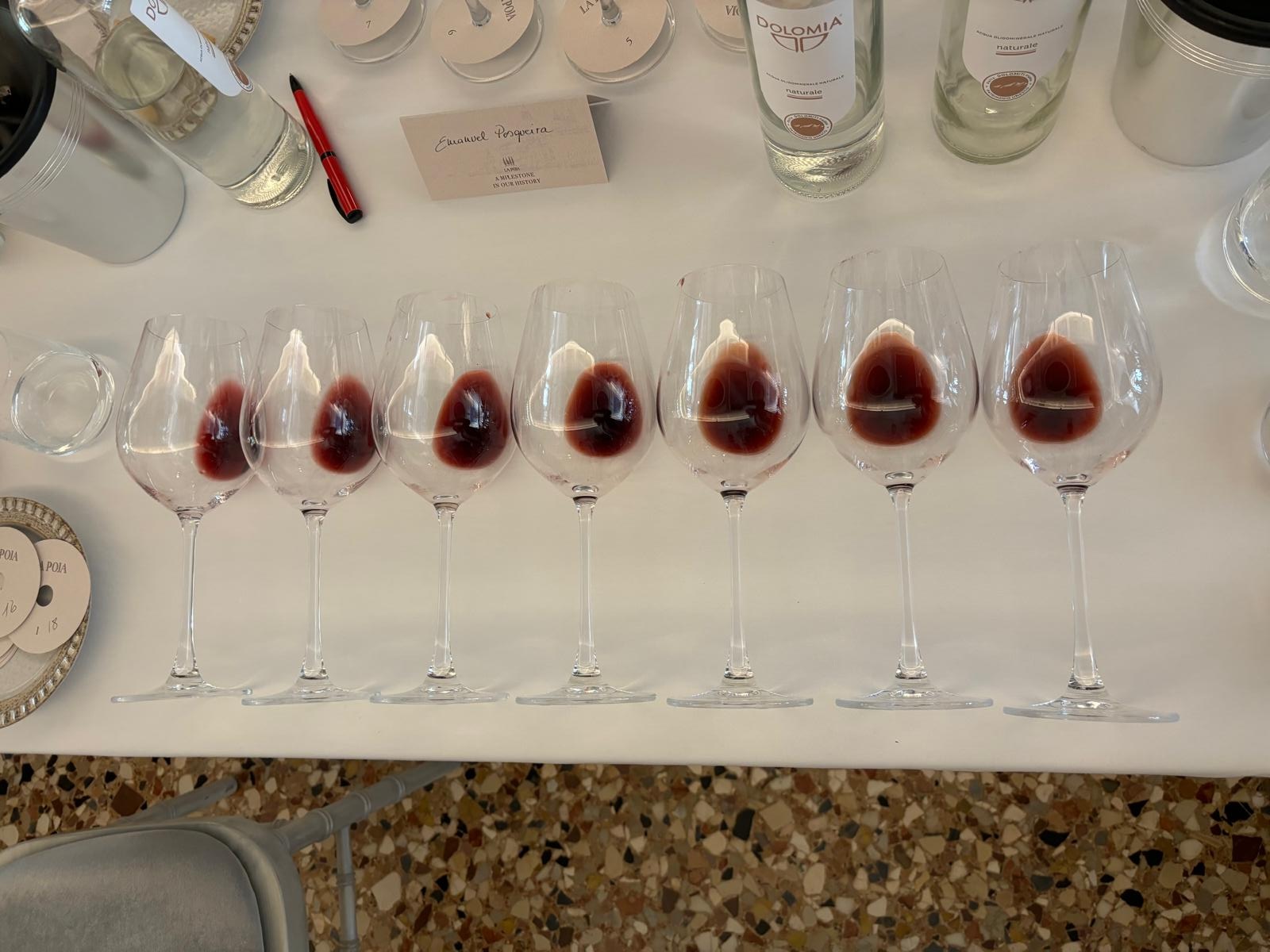
La Poja, the Corvina along the time
2018
Allegrini face to a long harvest, with slow ripening, generous and of high quality. Spring was particularly rainy, and in early July, due to the abundant grape clusters, we performed some thinning to bring the vineyard into balance. At the end of July, a dry period began, interrupted by some timely rainfall. On the eve of the harvest, we experienced heavy rains (up to 170 millimeters of water). Fortunately, the weather forecasts predicting further adverse conditions were disproven. September brought a kind of second small summer, with temperatures reaching 33°C, high accumulated heat, but equally high diurnal temperature variation (up to 15°C differences between day and night), allowing the grapes to achieve ideal ripening. The phenolic ripening occurred after the second half of September. The grapes are in perfect sanitary condition, with good quantities paired with high quality. The harvest at the La Poja vineyard marks the end of the harvest every year. In fact, the harvest here took place between October 18th and 19th, to allow the grapes to reach maximum sugar concentration and give rise to the enological legend of La Poja.
Alcohol content: 14.95% Vol
Total acidity: 6.00 g/l
Residual sugar: 1.4 g/l
Dry extract: 33.3 g/l
pH: 3.43
PHENOLOGICAL STAGES
Bud break: April 13
Flowering: May 20
Fruit set: May 30
Veraison: July 22
Harvest period: start on September 10, end on October 19
La Poja harvest: October 18-19
The crispness of small red forest fruits, light vegetal notes, boisé and earthy hints; on the palate, a bitter chocolate and slightly bitter finish. Excellent acidity sustains the volume. The elegant tannic structure should be read in perspective. A sip that impresses with its palate grip, not too concentrated. 94.
2016
Vintage 2016 was characterized by generally positive climatic conditions, despite above-average rainfall in spring. Heavy rain in May meant that prompt and thorough preventative measures had to be undertaken to protect the vines, which successfully safeguarded their health. The second half of June gave way to fine weather that continued throughout the summer months, with temperatures not exceeding 35 °C (95 °F). The marked differences in day-night temperatures recorded in particular during veraison, combined with the considerable water reserves accumulated during spring, resulted in an increase in sugar concentration, helped to maintain acidity and facilitated the development of the specific flavour characteristics of each varietal. Finally, a ‘slow’ harvest in ideal weather conditions allowed the grapes to achieve perfect ripening at a gradual pace. The grapes at La Poja were harvested between 17 and 19 October and the cool temperatures and long daylight hours in the first two weeks of October appeared to have made a difference. This Corvina, called Corvina ‘gentile’ because of its smaller berries, had a juicy pulp and an intense colour.
Alcohol content: 14.73% Vol
Total acidity: 5.85 g/l
Residual sugars: 1.8 g/l
Dry extract: 34.1 g/l pH: 3.51
PHENOLOGICAL PHASE
Bud break: 5 April
Flowering: 27 May
Fruit set: 9 June Veraison: 30 July
Harvest period: starts 18
September, ends 19 October
La Poja harvest: 17-19 October
Bright, both in color and on the nose, with notes of eucalyptus, pomegranate, then rhubarb, licorice, before fully opening up to a citrus palette. Tannic texture is wide, precise, and fine. Still very young, with excellent acidity, and astringent on the finish, accompanied by enveloping aromas, with slightly bitter and earthy tones. Fruity and generous on the second sip. Unmistakably 2016. 95.
2013
The Vintage was characterized by specific climatic conditions which fostered the vegetative cycle of the vine, encouraging slow but optimal ripening of the grapes. In autumn the climate was generally mild with temperatures above the seasonal average, followed by a very rainy and snowy winter. The mild conditions continued throughout spring. The grapes enjoyed gradual ripening, which came about, above all, mainly by virtue of light rather than heat, and this led to the synthesis of high-quality elements such as the accumulation of polyphenolic substances in the red grapes. The months of July and August were crucial, with their high temperatures and highly beneficial day-night temperature variations, which were very important for ideal ripening. The climate during harvesting in September and October was mostly good even if it was interspersed with days of heavy rain. La Poja’s vineyard was harvested on 11 October and the quality and health of the grapes were great, the grape-seed was dark and also the stalk had become beautifully red.
Alcohol content: 14.83 % Vol
Total acidity: 5.90 g/l
Residual sugars: 1.6 g/l
Dry extract: 33.8 g/l pH: 3.44
PHENOLOGICAL PHASE
Bud break: regular Flowering: late (June)
Fruit set: late Veraison: late
Harvest period: starts 16
September, ends 18 October
La Poja harvest: 11 October
It takes its time to open: the first nose is vegetal, herbaceous, mushroomy, before making way for blue fruits, blackberries, and balsamic notes. A material sip, very expressive and inviting, with floral hints closing on a fruity, well-balanced body. 95+.
2009
The main feature of vintage 2009 was the anticipated start of the growing season in comparison with previous years. In terms of climate, the heavy rainfall that accumulated during the winter compensated for the heat and lack of rain in summer. Throughout the whole of September, climatic conditions were good, with little rainfall and an accentuated difference between day and night temperatures. This undoubtedly enabled the grapes to reach maturity, determining excellent phenolic properties. The grape yields were normal and slightly lower than in past vintages. The wines achieved a good overall balance, with sugar concentrations within the norm. They are therefore expected to be extremely harmonious due to the levels of alcohol, acidity and polyphenolic components.
Alcohol content: 14.82% Vol
Total acidity: 5.45 g/l
Residual sugars: 2.2 g/l
Dry extract: 30.8 g/l pH: 3.52
PHENOLOGICAL PHASE
Bud break: good
Flowering: early
Fruit set: early
Veraison: 24 July
Harvest period: regular
On the first nose, ferrous notes with hints of currant and blood orange. It exudes youthfulness and, at times, recalls the energy of 2016. It stretches out and shifts toward more lacquered tones and bitter cocoa. A slender, fluid, dynamic sip with earthy hints on the finish and a definitively integrated tannic structure.
2006
A rapid vine growth assured sufficient foliage to favor the flowering, which started in the last week off May, Little rainfall in June and July granted a regular: fruit-setting in all grape varieties Seme rain in August (about 60 mm and ne hail) fostered an excellent version. The grapes were harvested on sunny days characterized by a considerable difference between day and night temperatures (8/25 “C), These weather conditions enabled us the harvest perfectly healthy grapes with high sugar content and at the ideal level of phenolic maturation. Climatic conditions have continued to be geed during the winter, with sunny, clear days.
Alcohol content: 14.83% Vol
Total acidity: 5.70 g/l
Residual sugars: 3.1 g/l
Dry extract: 30.6 g/l pH: 3.43
PHENOLOGICAL PHASE
Bud break: regular
Flowering: last week of May
Fruit set: regular (June)
Veraison: regular (July)
Harvest period: regular
Woody notes, a bit shadowy, developing into mushroom, champignon, licorice, and menthol; it continues to evolve, bringing in olive and rosemary. Mediterranean references. Fine but incisive tannic structure, accompanied by dried roses and walnut husk. 93.
2001
An exceptional vintage marked by a rather dry winter and a warm, sunny spring that brought about early flowering. The timely rains that occurred during the greatest period of drought-induced stress restored the vines’ equilibrium. The harvest took place some ten days earlier than usual. The sparse bunches, with their thick, crunchy skin and elevated sugar content, fostered the production of well-structured, elegant and balanced wines.
Alcohol content: 14,99 % Vol
Total acidity: 6.09 g/l
Residual sugars: 1.0 g/l
Dry extract: 38.3 g/l pH: 3.54
PHENOLOGICAL PHASE
Bud break: 10 April
Flowering: 5 June
Fruit set: 12 June Veraison: 24 July
Harvest period: 18 September for the grapes for vinification
Clear citrus aromas, powerful, meeting greener and balsamic hints. A silky sip with good material concentration and a velvety texture. Notable density, caressed by astringent undertones with a finish full of blood orange. 95.
1997
Unusually mild weather during most of the winter and in spring caused bud-burst to begin two weeks early. Hot and dry summer. Magnificent sunshine in the days before and during the harvest, as well as the difference between day and night temperatures helped to produce perfectly ripened grapes with an ideal phenolic maturation and sugar content, thus also preserving the grapes from mildew.
Alcohol content: 14.70 % Vol
Total acidity: 5.50 g/l
Residual sugars: 3.8 g/l
Dry extract: 31.5 g/l pH: 3.60
PHENOLOGICAL PHASE
Bud break: 10 days early
Flowering: regular
Fruit set: regular
Veraison: early
Harvest period: normally starts 25 September, ends
10 October
Iodine nose with forest floor notes, with some hints of tertiary development starting to show, but the material is warm and enveloping, with silky tannins and an almost fatty sensation at the center of the palate. 98.

